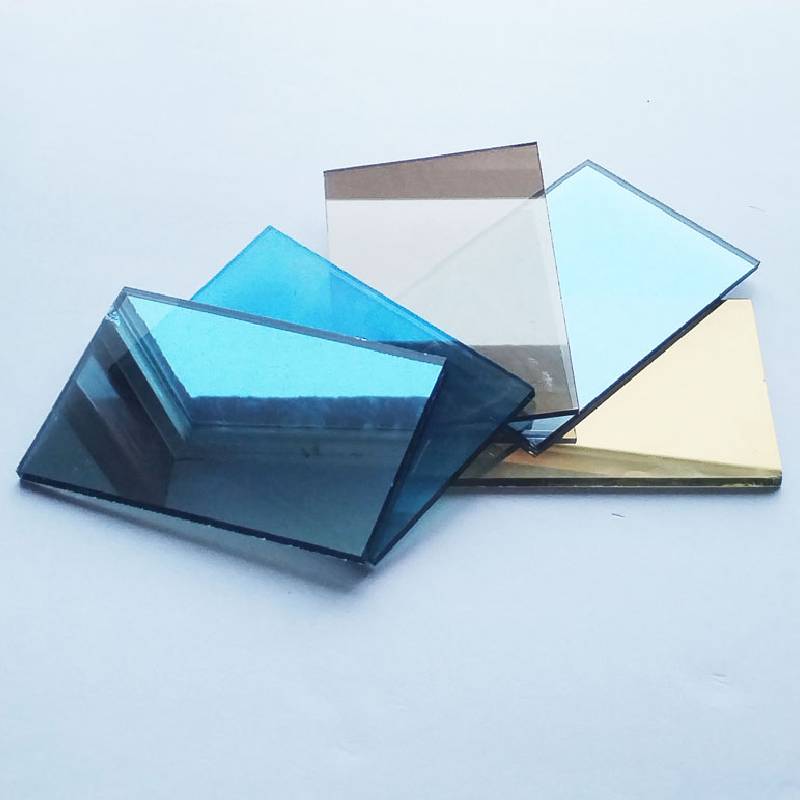The Use of Glass in Modern Architecture
In recent decades, glass has emerged as a fundamental material in modern architecture, transforming both the aesthetic and functional aspects of buildings
. This transparency-inclined medium serves not only to enhance the beauty and complexity of structures but also to promote sustainability and environmental consciousness in design.
One of the most significant advantages of using glass in architecture is its ability to create an illusion of space and openness. Floor-to-ceiling windows and glass walls blur the boundaries between indoor and outdoor environments, inviting natural light into interiors while offering unobstructed views of the surroundings. This seamless integration with nature has been recognized as beneficial for occupants' well-being, fostering a sense of connection to the outside world. Modern architectural designs often leverage this transparency, emphasizing the fluidity of space and creating inviting atmospheres that resonate with contemporary living.
Moreover, advancements in glass technology have greatly increased its functional capabilities. Energy-efficient glazing solutions, such as low-emissivity coatings and double or triple glazing, help regulate indoor temperatures, reducing the need for artificial heating and cooling. These innovations not only contribute to energy savings but also align with the principles of sustainable architecture, complementing efforts to reduce the overall carbon footprint of buildings. By using glass intelligently, architects can design spaces that are environmentally responsible while still being visually striking.
use of glass in modern architecture
The versatility of glass has also enabled architects to explore new design possibilities. Structural glass, for instance, allows for the creation of daring, unconventional shapes and forms that push the boundaries of architecture. Iconic buildings such as the Louvre Pyramid in Paris and the Apple Park in Cupertino exemplify how glass can be utilized not just for its transparency but as a structural element that defines a building’s identity. This melding of form and function encourages creativity in design, leading to innovative solutions that challenge traditional architectural norms.
However, the extensive use of glass in architecture is not without its challenges. Issues such as glare, heat gain, and privacy must be addressed to ensure functionality and comfort. Architects and designers must strike a balance between the benefits of natural light and the potential downsides of excessive sunlight exposure. By integrating features such as shading systems, green facades, and strategically placed trees, the negative impacts of glass can be mitigated.
In conclusion, the use of glass in modern architecture represents a synthesis of beauty, functionality, and sustainability. As architects continue to push the envelope of design, glass will undoubtedly remain a pivotal material in shaping our built environment. The challenges it presents are not barriers but rather opportunities for innovation and creativity, reflecting the dynamic nature of architecture today. The future of glass in architecture promises to be exciting, with the potential to further enhance our living spaces while promoting a harmonious relationship with nature.
 Afrikaans
Afrikaans  Albanian
Albanian  Amharic
Amharic  Arabic
Arabic  Armenian
Armenian  Azerbaijani
Azerbaijani  Basque
Basque  Belarusian
Belarusian  Bengali
Bengali  Bosnian
Bosnian  Bulgarian
Bulgarian  Catalan
Catalan  Cebuano
Cebuano  Corsican
Corsican  Croatian
Croatian  Czech
Czech  Danish
Danish  Dutch
Dutch  English
English  Esperanto
Esperanto  Estonian
Estonian  Finnish
Finnish  French
French  Frisian
Frisian  Galician
Galician  Georgian
Georgian  German
German  Greek
Greek  Gujarati
Gujarati  Haitian Creole
Haitian Creole  hausa
hausa  hawaiian
hawaiian  Hebrew
Hebrew  Hindi
Hindi  Miao
Miao  Hungarian
Hungarian  Icelandic
Icelandic  igbo
igbo  Indonesian
Indonesian  irish
irish  Italian
Italian  Japanese
Japanese  Javanese
Javanese  Kannada
Kannada  kazakh
kazakh  Khmer
Khmer  Rwandese
Rwandese  Korean
Korean  Kurdish
Kurdish  Kyrgyz
Kyrgyz  Lao
Lao  Latin
Latin  Latvian
Latvian  Lithuanian
Lithuanian  Luxembourgish
Luxembourgish  Macedonian
Macedonian  Malgashi
Malgashi  Malay
Malay  Malayalam
Malayalam  Maltese
Maltese  Maori
Maori  Marathi
Marathi  Mongolian
Mongolian  Myanmar
Myanmar  Nepali
Nepali  Norwegian
Norwegian  Norwegian
Norwegian  Occitan
Occitan  Pashto
Pashto  Persian
Persian  Polish
Polish  Portuguese
Portuguese  Punjabi
Punjabi  Romanian
Romanian  Russian
Russian  Samoan
Samoan  Scottish Gaelic
Scottish Gaelic  Serbian
Serbian  Sesotho
Sesotho  Shona
Shona  Sindhi
Sindhi  Sinhala
Sinhala  Slovak
Slovak  Slovenian
Slovenian  Somali
Somali  Spanish
Spanish  Sundanese
Sundanese  Swahili
Swahili  Swedish
Swedish  Tagalog
Tagalog  Tajik
Tajik  Tamil
Tamil  Tatar
Tatar  Telugu
Telugu  Thai
Thai  Turkish
Turkish  Turkmen
Turkmen  Ukrainian
Ukrainian  Urdu
Urdu  Uighur
Uighur  Uzbek
Uzbek  Vietnamese
Vietnamese  Welsh
Welsh  Bantu
Bantu  Yiddish
Yiddish  Yoruba
Yoruba  Zulu
Zulu 

